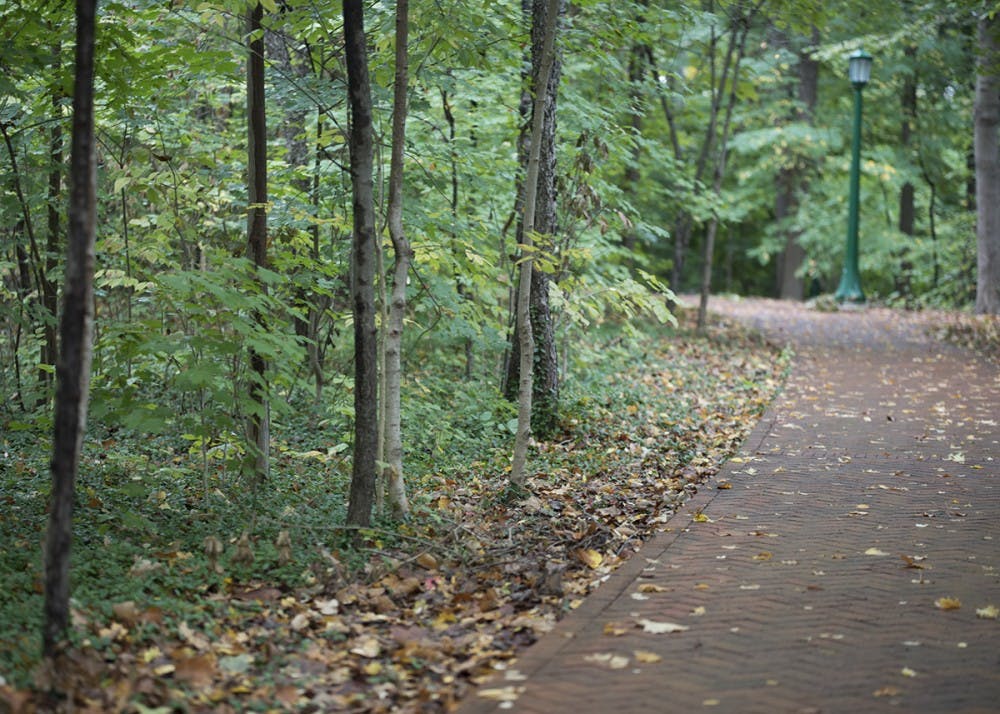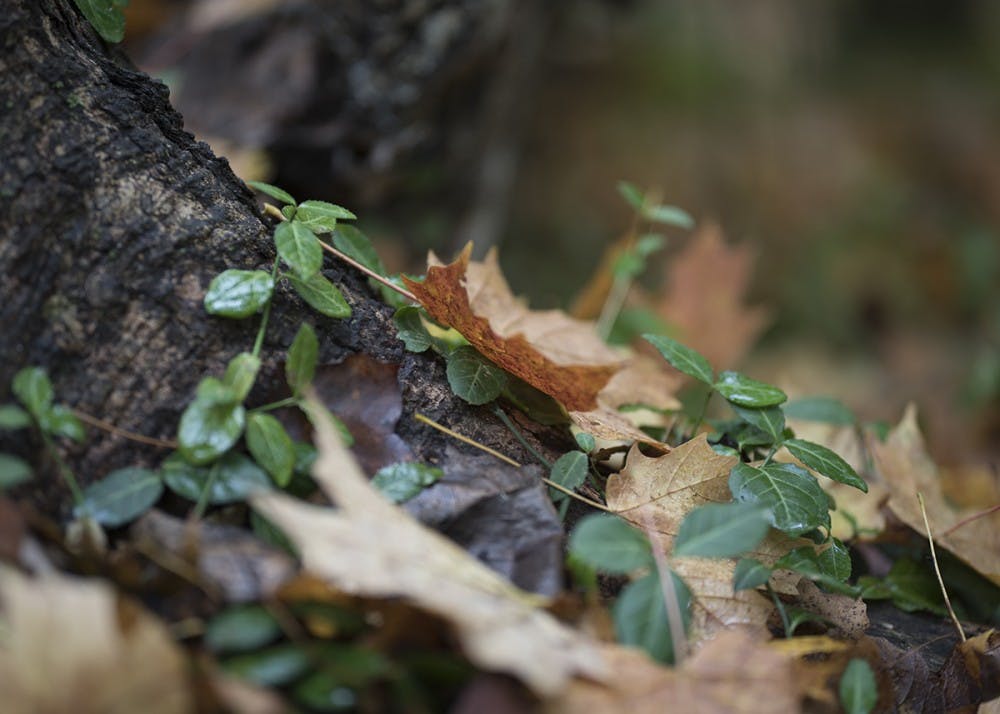For years, layers of dark green plants carpeted Dunn Woods. As they snaked through the forest, the plants, called purple wintercreepers, stole space, water and nutrients from neighboring plants.
“They spread and spread and spread,” IU landscape architect Mia Williams said.
Members of the Bloomington Urban Woodlands project have countered with their own efforts over the past seven years. They went out into the woods and plucked purple wintercreepers by hand.
“Those native plants that were just buried under the layers of purple leaf wintercreeper were coaxed out,” Williams said.
The purple wintercreeper is an example of an invasive species that had spread through Dunn Woods and other wooded areas in Bloomington, she said. While patches of purple wintercreepers remained, she said the project members’ efforts had allowed other plant populations to bounce back.

IU biology associate professor Heather Reynolds, head of the project, said supporting native plant populations while removing invasive species was one major goal of the project. She said if non-native species turned invasive and outcompeted native plants for resources, they would spread through Bloomington and cause native populations to decline.
University historian Jim Capshew said native plants evolved alongside insects and animals in Bloomington. As a result, many of these insects and animals relied on native plants as homes and food sources.
Reynolds said many animals eat insects, which eat native plants. When the plants are taken out of the equation, it also decimates animal and insect populations.
Instead of planting the native plants that Bloomington butterflies, birds and other animals rely on, Reynolds said people are drawn to the novelty of exotic plants. They then fill their yards with non-native grasses and ornamental plants, she said.
Savannah Bennett, project intern and second year IU doctoral student, said these ornamental plants can spread from yards and invade woodlands.
“It’s important for us to realize that what we plant in our yards affects much more than our yards,” she said. “It affects the entire environment around us.”
Despite what some may say, Reynolds said native plants are beautiful. In fact, the exotic plants people are drawn to can seem too flashy once people get used to lush woods full of native plants.
“Native plants are exquisitely beautiful, and once one also starts learning about all the good they do, it’s easy to get seduced,” she said.
Not only are they more beautiful, but native plants also require less work to care for, Reynolds said.
She said native plants have adapted to the soil, climate and wildlife in Bloomington. As a result, they can grow in these conditions with less help.
Williams said IU staff members have to water the non-native red ornamental flower beds by Sample Gates every day. They also fertilize them regularly.
She said many natural habitats do require less work in the long-run, but native landscapes need more maintenance in the first two years. Because they do not use chemicals or pesticides in native habitats, Williams said caring for them can be more work.
“You still have a pretty enormous investment in labor and time to keep a native landscape healthy and developing, and that’s OK,” she said. “You’re still helping the ecosystem, but people who tell you it’s no work are lying.”
One problem with native plants is that rabbits and deer love to eat them, Bennett said. She said they pick out the native plants and leave the non-native plants, which makes the gap between native and non-native plants even bigger.
To keep rabbits and deer from overeating native plants, Bennett said they can fence the animals out of some areas. They can also plant some native species that rabbits and deer do not like to eat.
Reynolds said one native plant that works particularly well is the oak tree, which supports 534 butterfly and moth species, according to a study by the University of Delaware College of Agriculture and Natural Resources.
But she said people should plant a variety of native plants rather than relying on one.
“Because different animal species are adapted to different native plants, promoting a diversity of native plants is the best way to promote Indiana wildlife,” she said.
Reynolds said if people value the butterflies, songbirds and other animals that call Indiana home, they should care about native plants.
People also eat native plants and the animals that rely on them, Reynolds said. Native plants even support pollinators like bees that are necessary to grow food.
“Biodiversity brings us so many benefits,” she said.
Increased biodiversity through planting native plants also promotes cleaner water and air, Reynolds said. She said it also regulates pests, diseases, floods and the climate.
Capshew said people do not realize how reliant they are on native plants because they do not garden or go out in nature as often as people did in the past. By appreciating nature and native plants, he said, people can better themselves and the environment.
“If we destroy nature, we destroy ourselves,” he said.
Despite declines in biodiversity, Capshew said people are beginning to care more about the environment and less about how exotic a plant looks. He said seeing more owls and a nesting pair of Cooper’s hawks in Dunn Woods gave him hope things can change.
“It was a sign that there was a healthier ecosystem to support them,” he said. “So even though there’s a lot of work to be done, I think we’re making progress.”




